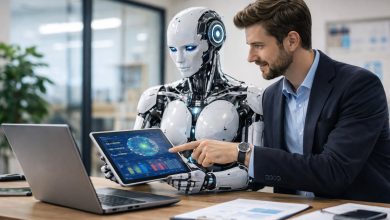Artificial intelligence has rapidly advanced over the past decade, but progress has not been random or chaotic. Much like athletes preparing for tournaments, AI models are shaped and refined through structured training camps where performance is continuously tested, evaluated, and improved.
These environments, often designed as competitive or adversarial learning systems, push algorithms to grow stronger with each iteration. Just as athletes require disciplined practice before entering the championship arena, AI models rely on training regimes that simulate challenges, adapt strategies, and push the boundaries of their capabilities.
Training Grounds for Smarter Algorithms
At the heart of AI progress is the process of training models in simulated environments. These training grounds mirror sports fields where practice determines performance. Models are exposed to vast datasets, designed scenarios, and controlled simulations that prepare them for real-world tasks. Reinforcement learning, in particular, has adopted the competitive dynamics of sport by rewarding models for successful actions and penalising poor ones.
The concept goes beyond mere repetition. Just as coaches design drills to test specific skills, AI engineers build frameworks that push algorithms to adapt under varying conditions. In these camps, models compete against themselves, other models, or human-designed benchmarks. This self-play ensures constant improvement, as weaknesses are exposed and corrected through repeated trials.
In some ways, the process can be compared to multiplayer games, where each participant’s strength pushes the others to improve. AI models evolve similarly, with each training session acting as a new round in the competition. The spirit of growth resembles the mechanics of games like color game online betting, where progression relies on quick decisions, adaptation, and strategic thinking. However, unlike luck-based systems, AI thrives on logic, precision, and calculated improvement, making its championship potential far more sustainable.
The Role of Self-Play in Advancement
Self-play has emerged as one of the most effective ways to build resilient AI models. By competing against themselves, algorithms create an environment of constant challenge. This mirrors the way athletes train against their own records or scrimmage with teammates to sharpen their abilities.
One of the most famous examples of self-play is AlphaGo, the AI that mastered the game of Go. Instead of learning solely from human matches, AlphaGo played millions of games against itself, refining strategies and exploring moves that even experts had not considered. This approach produced a system capable of defeating world champions, a milestone that demonstrated the power of training camps built on self-competition.
The beauty of self-play lies in its scalability. Models can run countless simulations simultaneously, allowing them to explore far more strategies than any single human could in a lifetime. This accelerates learning, expands creativity, and fosters resilience, as the AI learns to adapt to a wide variety of situations.
Adversarial Training as a Competitive Match
Beyond self-play, adversarial training introduces even more intense competition. In these scenarios, one model attempts to perform a task while another actively tries to disrupt it. The contest forces both sides to innovate and evolve, similar to rival sports teams pushing each other to new heights.
Generative adversarial networks (GANs) are the clearest example of this. They consist of two models: a generator that creates data and a discriminator that judges it. The generator aims to fool the discriminator, while the discriminator sharpens its ability to detect flaws. This rivalry produces increasingly realistic outputs, whether in images, audio, or text.
The process mirrors an ongoing match where no side can afford to stagnate. As the generator improves, the discriminator must respond with better detection methods. The result is a constant cycle of improvement that drives both models toward excellence. This training approach highlights why competition is central not just to sports but also to cutting-edge AI development.
From Training Camps to Real-World Championships
While training camps prepare AI models in simulated settings, the true test lies in their application to real-world problems. Just as athletes leave practice fields for championship matches, AI systems transition from controlled training environments to practical deployment.
Healthcare provides a striking example. Models trained on massive medical datasets are tasked with diagnosing diseases, predicting patient outcomes, and assisting in research. Their performance depends on how effectively their training prepared them for real cases. Success in these scenarios represents the championship stage of AI, where the stakes involve lives rather than trophies.
Similarly, autonomous vehicles rely on training environments filled with simulated road conditions, obstacles, and traffic patterns. These digital drills prepare the vehicles for unpredictable real-world roads. Only through extensive training camps can such systems achieve the precision and reliability necessary for safe deployment.
Financial systems, logistics operations, and climate modelling are other areas where AI training translates into real-world victories. In each case, preparation in structured environments defines the ability of models to deliver consistent results under pressure.
The Future of AI Training
Looking ahead, AI training camps will grow even more complex and immersive. Advances in computing power and simulation design will enable richer environments where models face challenges closer to real-world unpredictability. This will include multi-agent systems where dozens or even hundreds of models interact, each influencing the other’s learning path.
The introduction of ethical training frameworks is also expected. As AI assumes greater roles in society, training must include moral and social considerations, ensuring that algorithms not only perform well but also act responsibly. This adds a new dimension to the competition, where the goal is not just efficiency but also alignment with human values.
Moreover, cross-disciplinary training will emerge, where models trained in one domain adapt their skills to another. This mirrors athletes who excel across sports, bringing agility and adaptability that make them champions in multiple arenas. Such versatility will define the next generation of AI systems, capable of contributing to medicine, engineering, and education simultaneously.
Conclusion
AI training camps are the proving grounds where algorithms transform from raw learners into championship-level performers. Through methods like self-play and adversarial training, models continuously sharpen their skills, preparing for deployment in high-stakes real-world scenarios. These processes mirror the discipline, competition, and resilience of athletic training, proving that excellence requires structured practice and constant challenge.
The championship of AI is not won in isolated breakthroughs but through rigorous preparation that shapes sustainable performance. As training camps evolve, they will continue to produce models capable of tackling society’s toughest problems with precision and creativity. Much like athletes rising through competition, AI systems will achieve greatness by playing, learning, and improving in every match they face.




